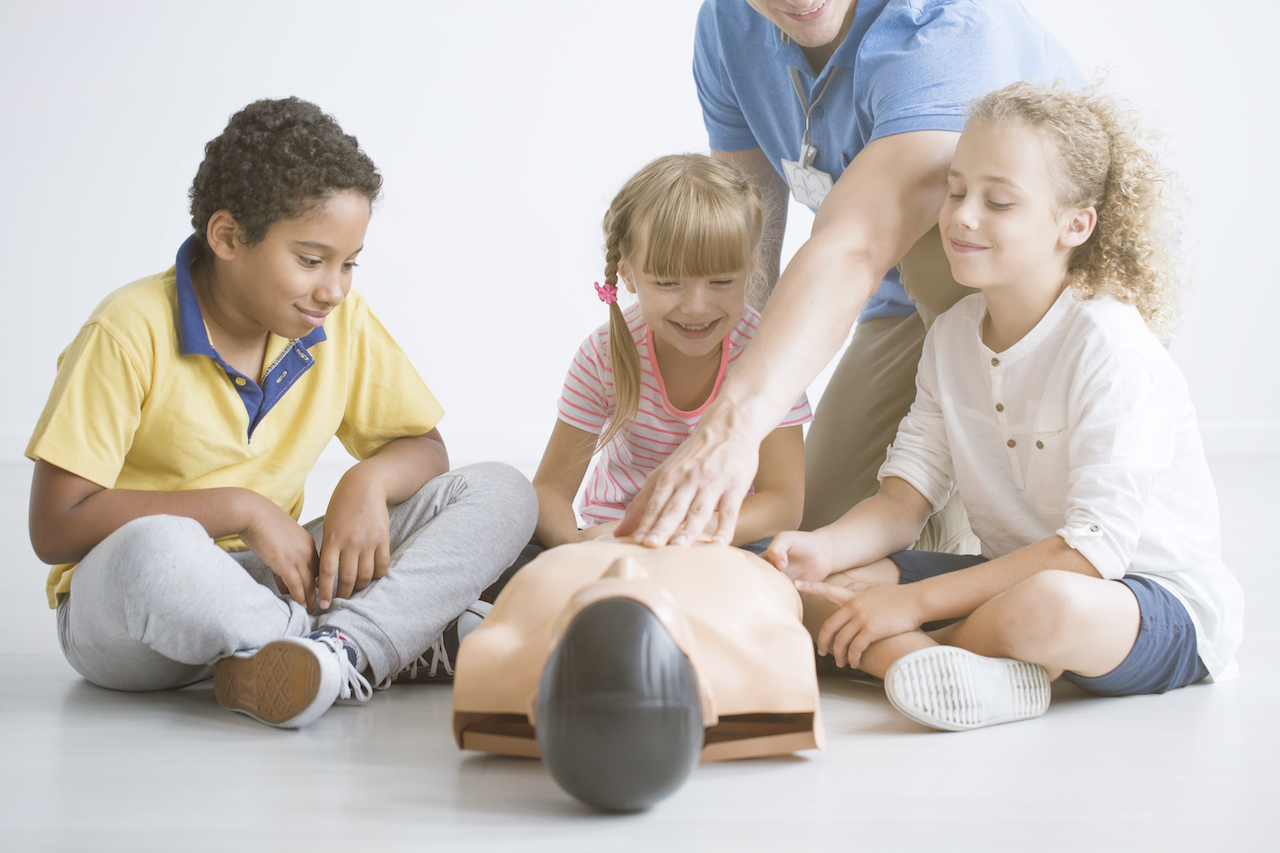
Learning CPR at a young age is a skill that can help your children save lives. CPR is being taught to kids in schools, in youth organizations, and even at home by their parents. In America, about 20 states require CPR training to graduate high school.
Of course, high schoolers can do CPR, but the question as to whether middle schoolers—or younger children—can do CPR effectively is still not fully answered. Children can conduct the motions of CPR at any age—the real question is whether they have enough strength to conduct it properly.
Teaching Kids CPR
Only 19% of 11- and 12-year-olds were able to properly compress the chest of a mannequin, compared to the 45% of 13-year-olds and over who were successful in performing proper chest compressions. CPR training is more effective and appropriate for high schoolers because they can both learn the skill and have the muscle to do it well.
However, with repeated training, younger kids will be able to memorize and absorb the knowledge and ability to conduct basic CPR, which will become a useful tool as they age and gain muscle. This includes the ability to understand and use AEDs and perform basic first aid, as well. So, there’s really no downside to teaching younger children CPR. It may even help save lives in the future.
How to Teach Kids CPR
Children’s brains are like sponges when they are younger; they absorb knowledge easily, and that knowledge sticks with them for most of their life. However, children also have a very short attention span, so here are a few strategies to help your kiddos learn CPR more simply and effectively. Before you begin teaching, be sure that there are no distractions, like electronics, unless they are being used as a teaching tool.
Self-Restraint and Patience
Kids get distracted very easily. It’s okay to let them talk and joke around a bit, but be sure to gently steer them back to the main topic of conversation.
Give Breaks In Between Lessons
Kids have a short attention span, so it can be difficult for them to learn information without breaks. Plan on taking 1-2 ten-minute breaks during the lesson. During these breaks do something to get your students active, like a few jumping jacks or maybe even a dance break to let their minds relax and have fun.
Utilize Different Learning Styles
For example, you could repeat some information on a whiteboard or chalkboard. This makes it easier for children to make notes and memorize information.
Give Out Rewards
Children learn in different ways than adults. Giving kids rewards when they answer a question or do an assignment correctly will inspire them to do better and motivate them to learn more.
Give Them a Reason to Learn
Using their own experiences to help kids understand what you are teaching them will also help them understand the importance of CPR, first aid, and AEDs. For example, you could ask the class if they have ever accidentally hurt themselves by falling or breaking a bone; this makes them understand the topic and want to keep others from experiencing that same pain. However, keep these conversations light and fun whenever possible.
CPR Classes and Certifications
Specialized Health and Safety offers a wide range of different CPR, first aid, and AED classes for anyone interested. If you would like to learn more about CPR, pediatric CPR, or anything regarding health and safety, check out our services and classes!

